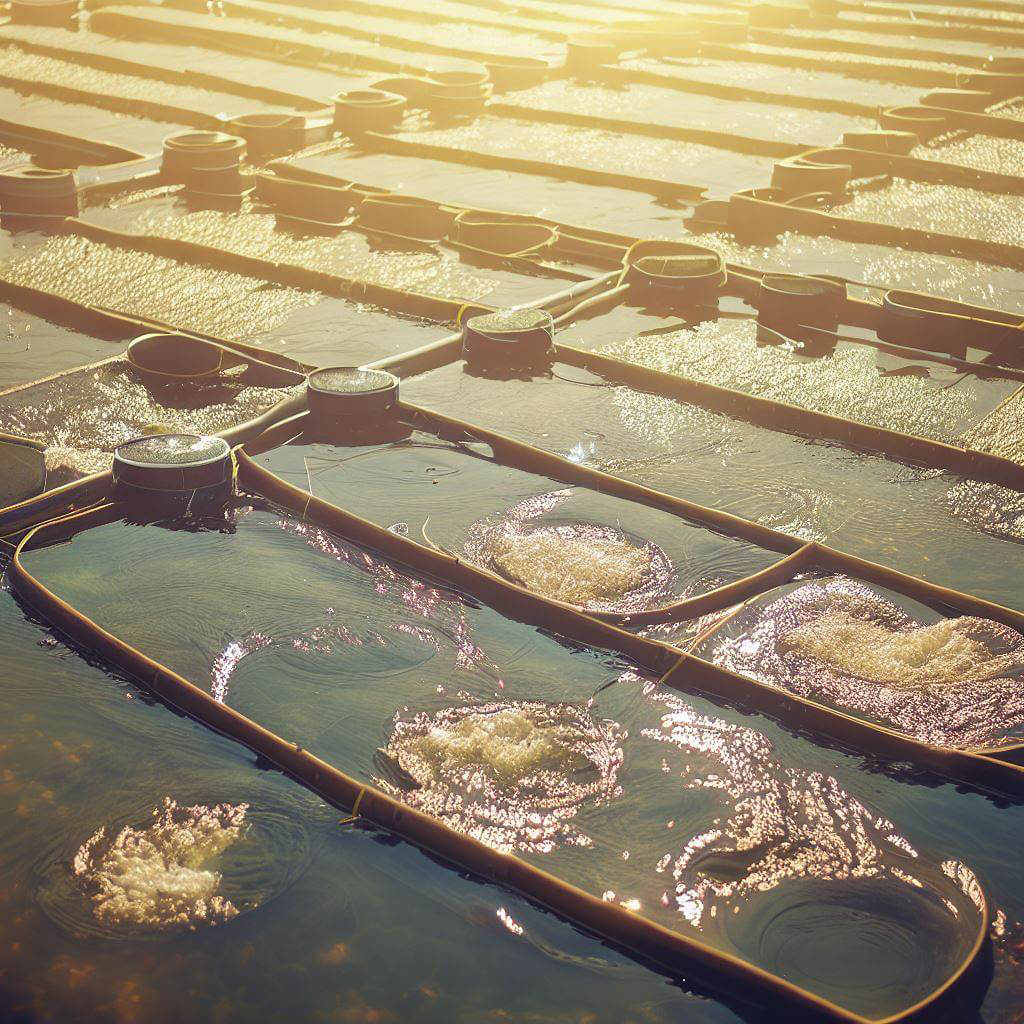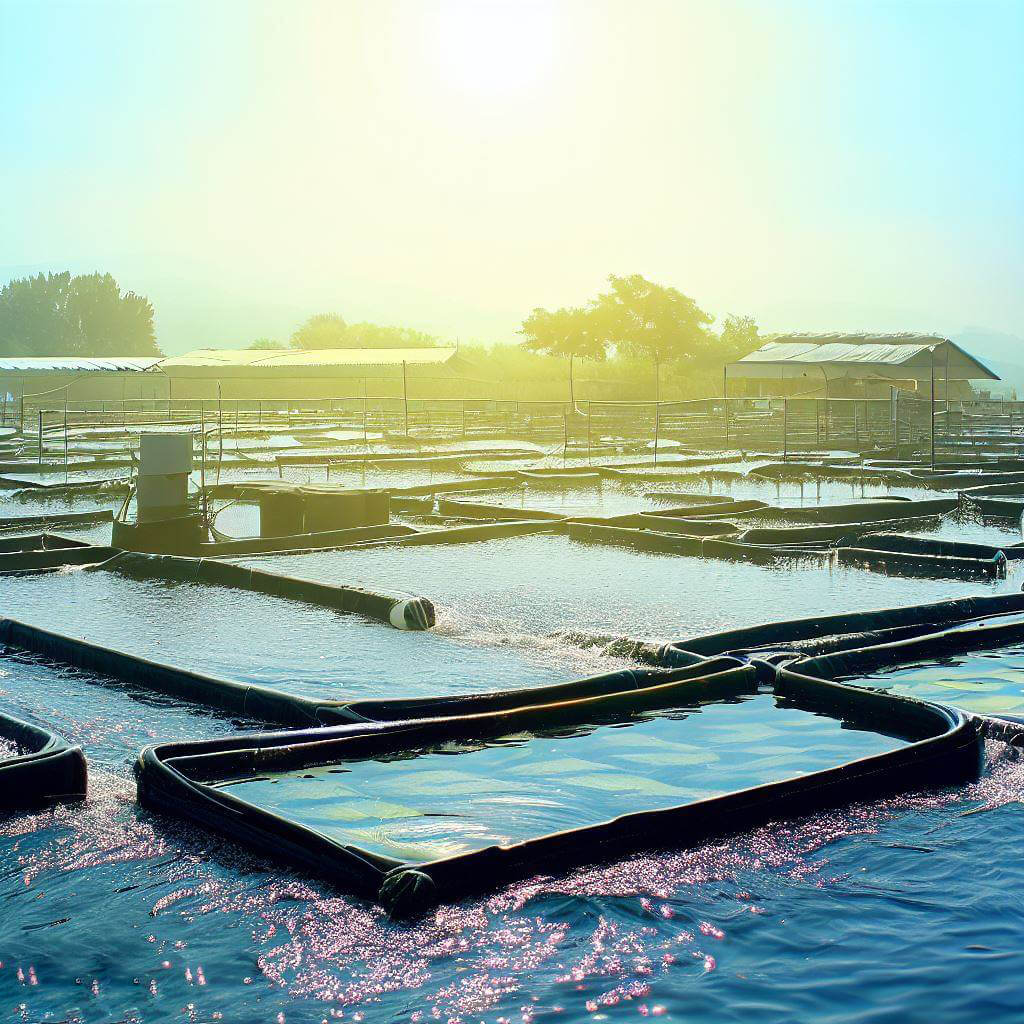
Fish farming, or aquaculture, is the practice of raising fish, shellfish, and aquatic plants in controlled environments. With an increasing global demand for fish products, aquaculture has become one of the fastest-growing food production sectors worldwide. It plays a critical role in providing protein and other essential nutrients to millions of people.
Probiotics are living microorganisms that, when administered in adequate amounts, confer a health benefit to the host. In aquaculture, probiotics have been gaining attention for their potential to improve fish health, nutrition, and growth. Additionally, they can help maintain water quality, enhance the immune system, and mitigate diseases.
Sustainable fish farming is crucial for meeting the increasing demand for fish products while preserving aquatic ecosystems. Probiotics offer an eco-friendly and efficient solution to improve fish farming practices and minimize the negative environmental impacts.
This essay will discuss the use of probiotics in fish farming, exploring their definition, characteristics, and mode of action. We will delve into their roles in fish nutrition, disease management, and water quality improvement. Finally, we will address the challenges and limitations of using probiotics in aquaculture and discuss future prospects.

Probiotics are live microorganisms that provide health benefits when administered in adequate amounts. These beneficial bacteria can improve the host's gut health, immune system, and overall well-being.
Several types of probiotics are commonly used in aquaculture, including Bacillus, Lactic Acid Bacteria (LAB), and Photosynthetic Bacteria (PSB). Some commercial products containing these probiotics are BioAqua, Golden Shell, and Aqua Photosynthetic Bacteria.
| Type of Probiotic | Description | Examples of Strains | Common Applications |
|---|---|---|---|
| Bacillus | Spore-forming, gram-positive bacteria known for their ability to produce enzymes and antimicrobial compounds | Bacillus subtilis, Bacillus licheniformis | Enhancing nutrient absorption, improving water quality, inhibiting pathogen growth, promoting growth and overall health of fish |
| Lactic Acid Bacteria (LAB) | Gram-positive bacteria that produce lactic acid as a byproduct of carbohydrate fermentation | Lactobacillus acidophilus, Lactobacillus casei | Improving gut health, boosting immune system, preventing diseases, and maintaining water quality |
| Photosynthetic Bacteria (PSB) | Bacteria capable of performing photosynthesis, contributing to nutrient cycling and water quality improvement | Rhodobacter sphaeroides, Rhodopseudomonas palustris | Enhancing water quality, promoting beneficial microorganism growth, reducing harmful substances, and maintaining a balanced ecosystem |
Probiotics act in various ways to benefit fish farming. They can enhance nutrient absorption, improve water quality, and help manage diseases by inhibiting pathogen growth and boosting the fish's immune system.

Probiotics can improve the digestibility of nutrients in fish feed, leading to better nutrient absorption and utilization. This results in improved growth and overall health of the fish.
By enhancing nutrient absorption, probiotics can help improve feed conversion ratios, meaning that fish can grow more efficiently with less feed. This reduces the cost of fish farming and the environmental impact of feed production.
Probiotics can help break down fish waste more effectively, reducing the amount of harmful substances released into the environment. This contributes to a more sustainable fish farming practice.

Probiotics can help strengthen the fish's immune system, making them more resistant to infections and diseases. For example,Enterococcus faecium has been shown to enhance the immune system of fish, improving their overall health.
Probiotics can help inhibit the growth of harmful pathogens in the aquatic environment, reducing the risk of diseases. They achieve this by competing for nutrients and producing antimicrobial substances that inhibit pathogen growth.
Probiotic supplementation can be done through various methods, such as adding them directly to the water, incorporating them into fish feed, or using them in combination with other treatments. The choice of strategy depends on the specific needs of the fish farm and the desired outcome.

Probiotics can help break down harmful substances and toxins in the water, improving overall water quality. For instance, nitrifying bacteria play a crucial role in converting toxic ammonia to less harmful nitrate, promoting a healthier aquatic environment.
Probiotics promote the growth of beneficial microorganisms in the aquatic environment, which contribute to a balanced ecosystem. This supports the overall health and well-being of fish and other aquatic organisms.
By improving water quality and promoting a balanced ecosystem, probiotics help maintain optimal water parameters, such as pH, temperature, and dissolved oxygen levels. This creates a conducive environment for fish growth and development.

One of the challenges in using probiotics in fish farming is ensuring the safety and efficacy of the chosen strains. Rigorous testing and quality control measures are necessary to guarantee that the probiotics do not pose any risks to the fish or the environment.
Regulatory frameworks and quality control standards for probiotics in aquaculture vary across countries, making it difficult to ensure consistency in the quality and efficacy of probiotic products.
While probiotics offer many benefits, they may not always be cost-effective or easily scalable, especially for small-scale fish farms. Research and innovation are necessary to develop affordable and scalable probiotic solutions for the aquaculture industry.

This essay has explored the use of probiotics in fish farming, highlighting their roles in nutrition, disease management, and water quality improvement. We have also discussed the challenges and limitations associated with their use in aquaculture.
Probiotics play a crucial role in promoting sustainable fish farming practices by improving fish health, reducing the environmental impact, and enhancing the overall efficiency of fish farming operations.
Continued research and innovation are necessary to further understand the potential of probiotics in aquaculture and develop new, effective, and affordable probiotic solutions for the industry.
Probiotics offer a promising, eco-friendly, and efficient solution for improving the efficiency and sustainability of
fish farming practices. By harnessing the power of these beneficial microorganisms, we can enhance fish health, optimize nutrition, prevent diseases, and improve water quality, all while minimizing the environmental impact of aquaculture.
As the global demand for fish products continues to rise, it becomes increasingly important to adopt sustainable and eco-friendly practices in fish farming. Probiotics, with their myriad of benefits, have the potential to revolutionize the aquaculture industry, making it more efficient and environmentally responsible.
However, it is essential to address the challenges and limitations associated with the use of probiotics in fish farming, such as safety, efficacy, regulatory issues, and cost-effectiveness. Through continued research, innovation, and collaboration among researchers, industry stakeholders, and policymakers, we can overcome these challenges and unlock the full potential of probiotics in aquaculture.
In conclusion, probiotics offer an exciting opportunity to improve the efficiency and sustainability of fish farming practices, contributing to a more secure and eco-friendly food production system for future generations. Embracing the power of probiotics in aquaculture will not only benefit the industry and its stakeholders but also the environment and global food security.
Commercial probiotics for fish farming are typically produced through fermentation processes using selected beneficial bacteria strains. These strains are then formulated into various products, such as powders, liquids, or feed additives, for easy application in aquaculture systems.
Probiotics are used in fish farming to improve fish nutrition, enhance immune systems, prevent diseases, and maintain water quality. They promote a healthy and balanced aquatic environment, leading to more sustainable and efficient fish farming practices.
Commonly used probiotics in aquaculture include Bacillus, Lactic Acid Bacteria (LAB), and Photosynthetic Bacteria (PSB). These beneficial microorganisms can enhance fish health, growth, and overall well-being while improving the aquatic environment.
An example of a probiotic for fish is BioAqua, a product containing beneficial Bacillus strains. This probiotic can improve fish health, nutrition, and water quality, promoting a healthier and more sustainable aquaculture system.